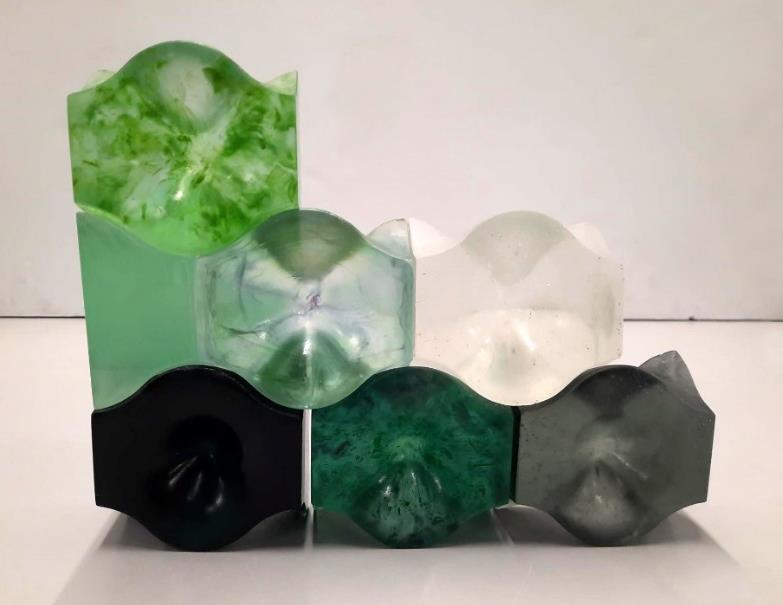Glass Up-Casting: A Review on the Current Challenges in Glass Recycling and a Novel Approach for Recycling “As-Is” Glass Waste into Volumetric Glass Components

Abstract
This paper presents the casting of volumetric glass components from glass waste as an alternative glass-recycling approach. The approach is characterized by its flexibility to accommodate a variety of compositions and ability to yield volumetric (solid or thick-walled) glass products that can tolerate higher contamination rates without a significant compromise to their properties. The novelty of the proposed glass-to-glass recycling method lies in the “as-received” recycling of glass waste, using relatively low forming temperatures (750–1200 °C). This reduces both the need for expensive, labour-intensive and logistically complex purifying, segregation and treatment (e.g. removal of coatings) techniques, and the required energy and CO2 emissions for product forming. Aim of this paper is to provide an overview of the potential but also of the technical and supply-chain challenges and limitations that still need to be tackled, in order to introduce this recycling approach to the market. Addressing the supply-chain barriers of glass recycling, the principal challenges linked to the collection and separation of glass waste and the established quality standards for the prevailing glass production technologies are identified, in order to argue upon the potential of this new recycling approach. In continuation, addressing the technical challenges that are mainly linked to contamination, an overview is provided of the main experimental findings on the influence of cullet contaminants and casting parameters on the generation of defects, and how these affect the mechanical properties. The experiments study a broad variety of glass compositions, including soda-lime, borosilicate, aluminosilicate and lead/barium glasses, and different levels of cullet contamination, of embedded (e.g. frit, wire) or external (e.g. stones, glass ceramics) character. Based on the cullet characteristics and imposed firing schedules, different glass quality grades arise and critical defects are highlighted. Thereafter, the most promising glass waste sources that can be recycled via this novel recycling approach are distinguished and directions for future research are highlighted.
Published
Issue
Section
Design Philosophy & Structural Safety
License
Copyright (c) 2022 Telesilla Bristogianni, Faidra Oikonomopoulou

This work is licensed under a Creative Commons Attribution 4.0 International License.



